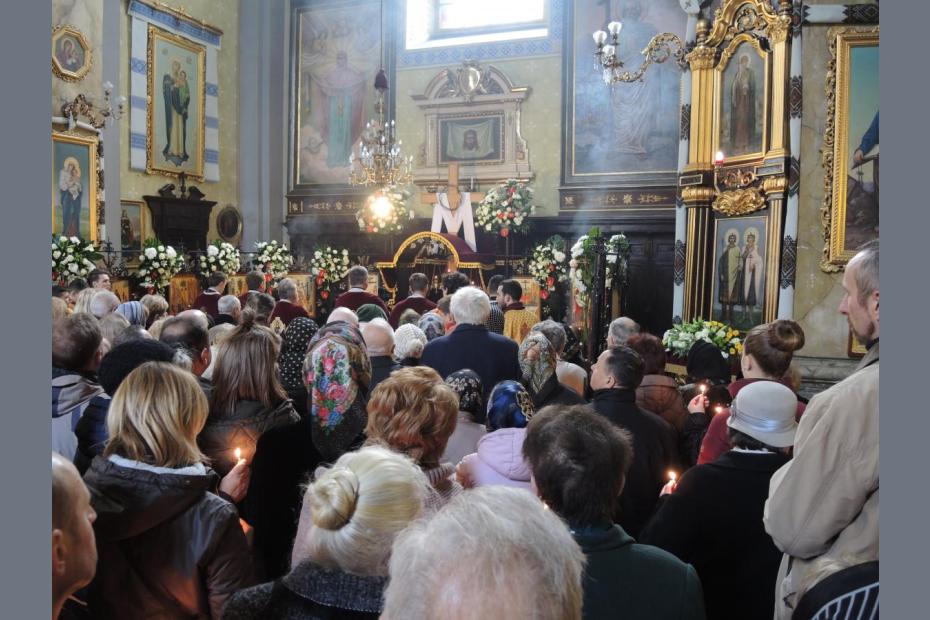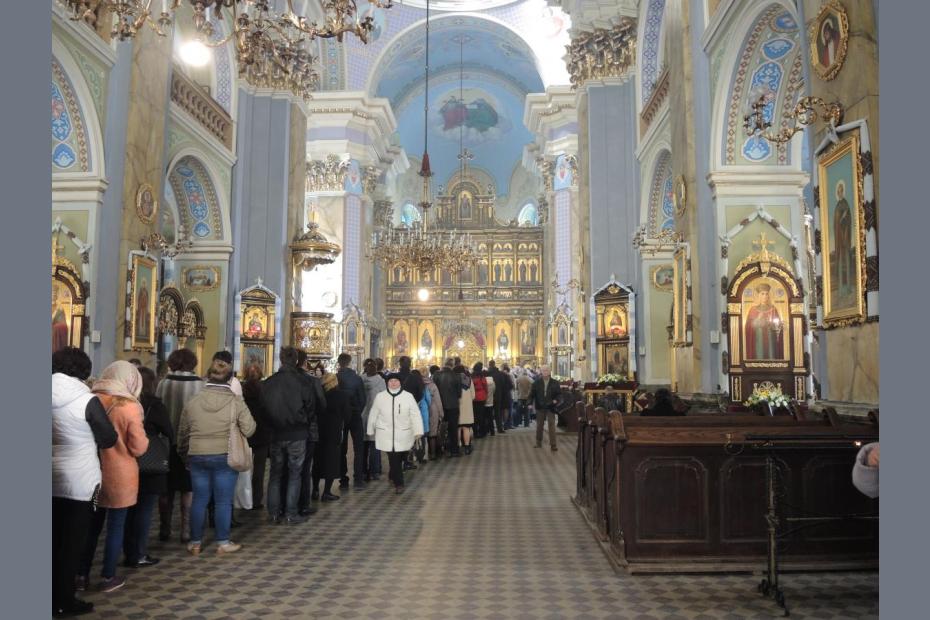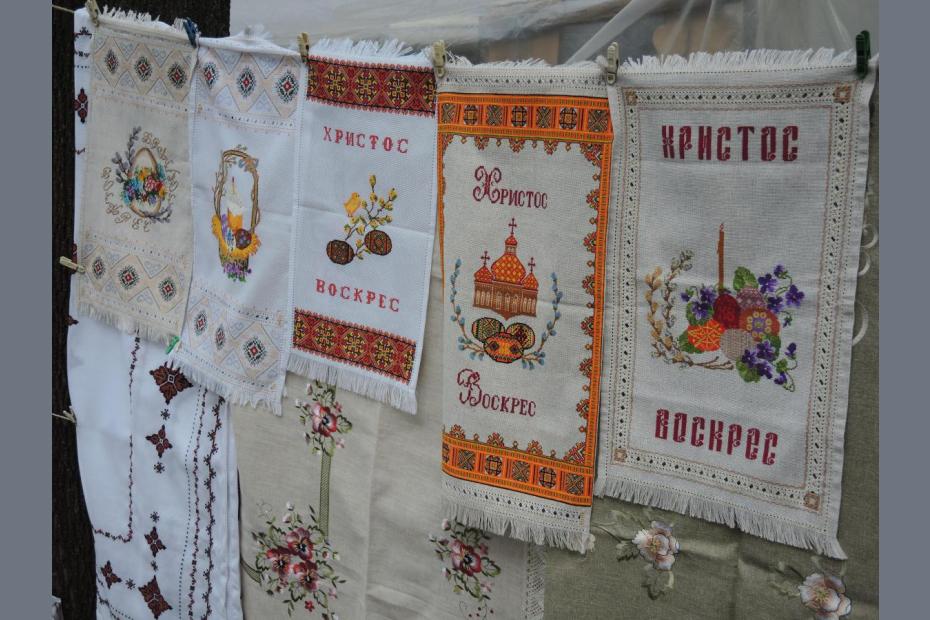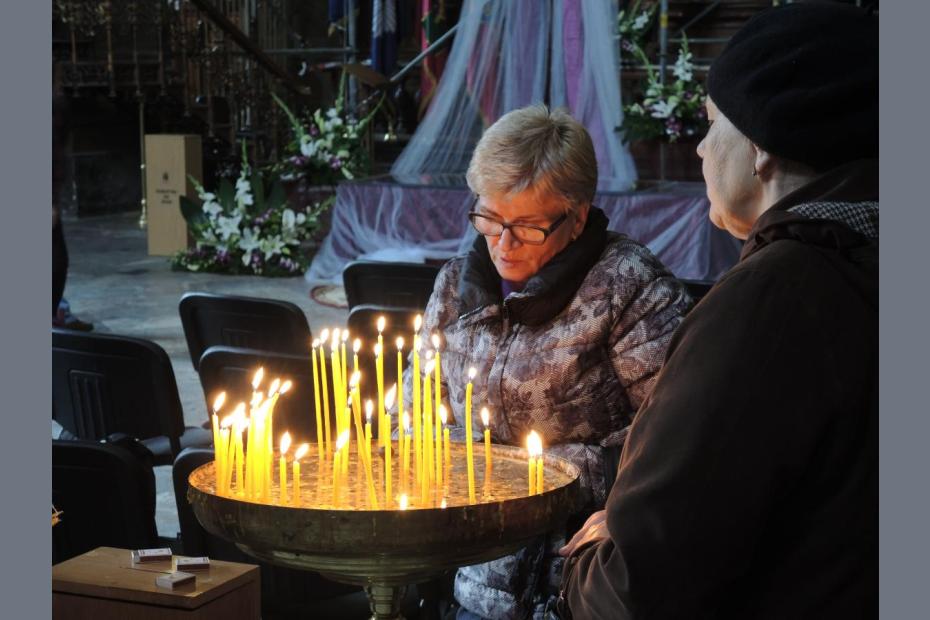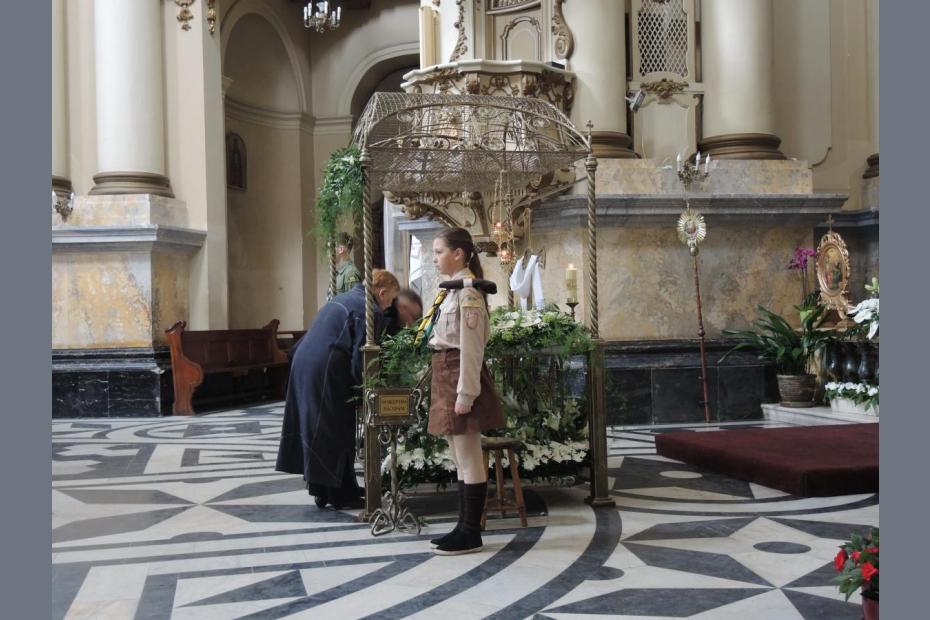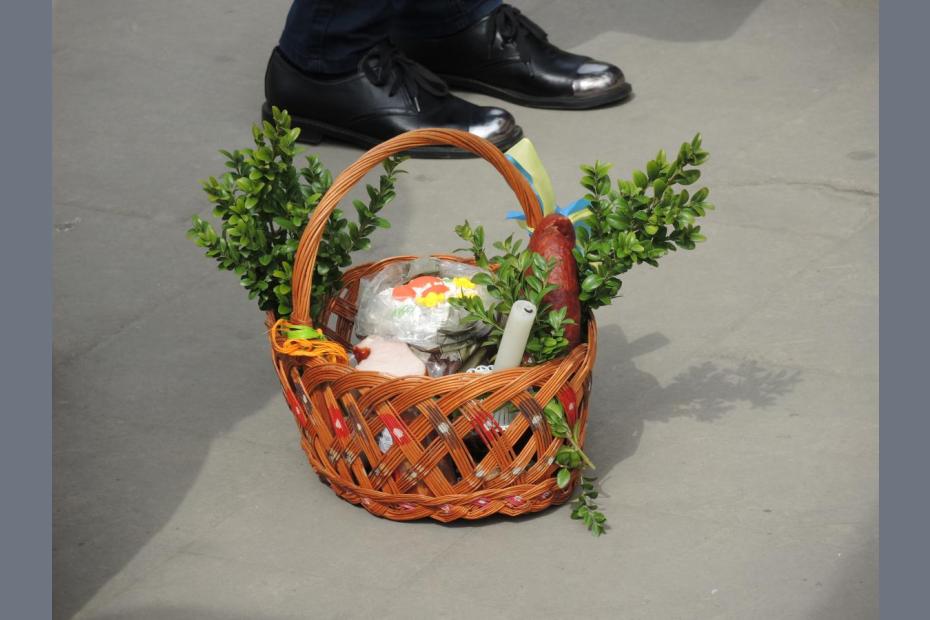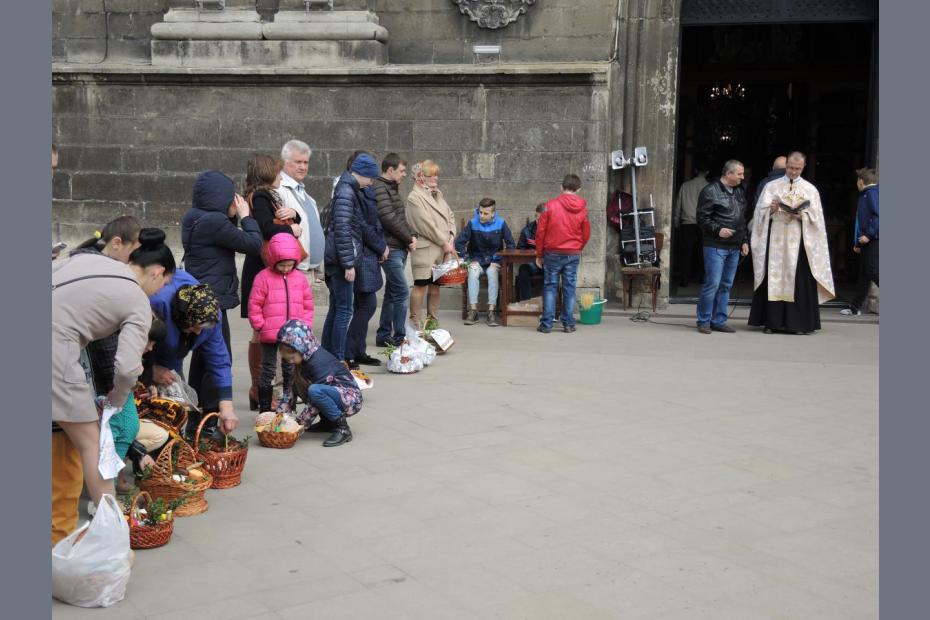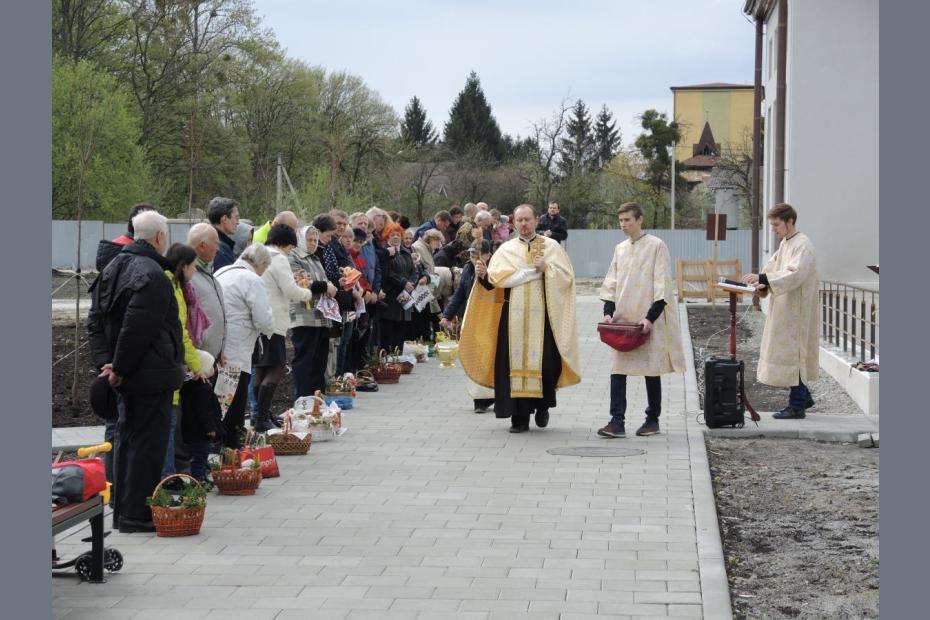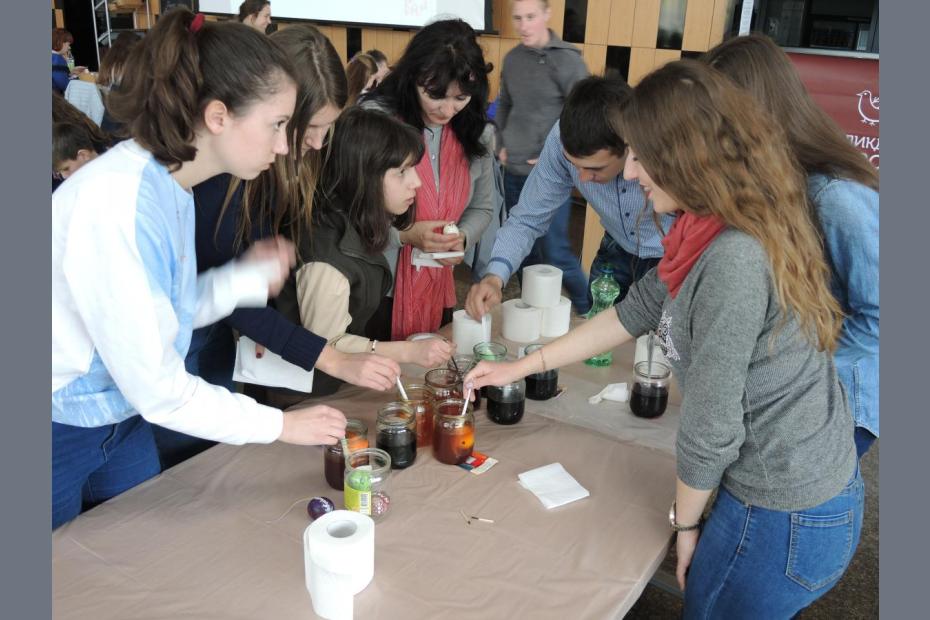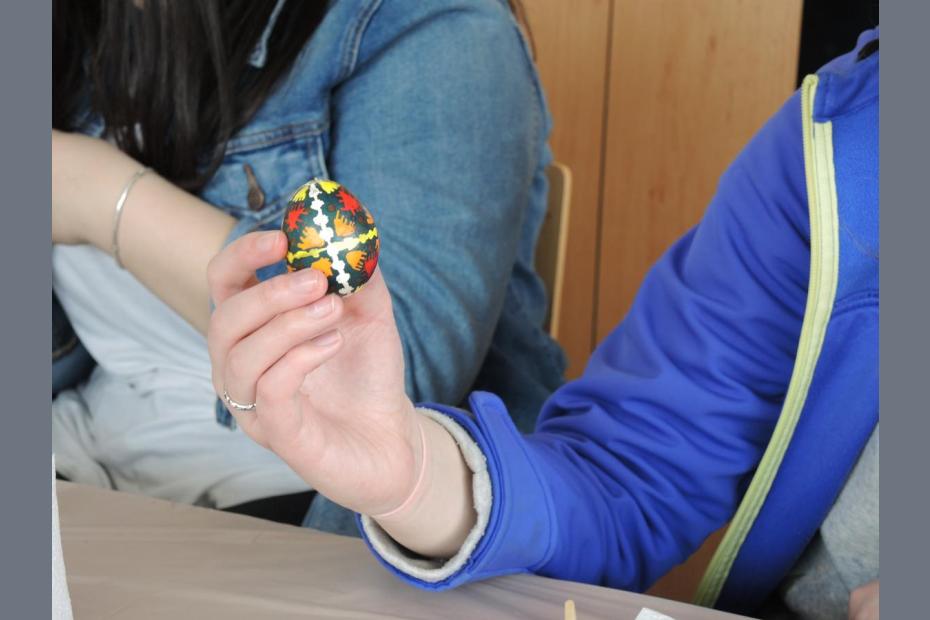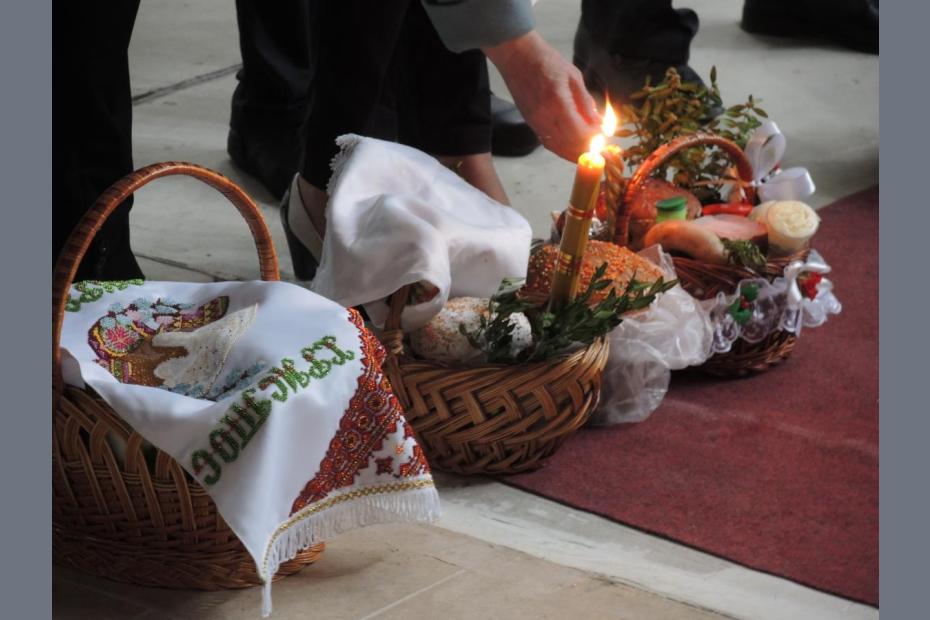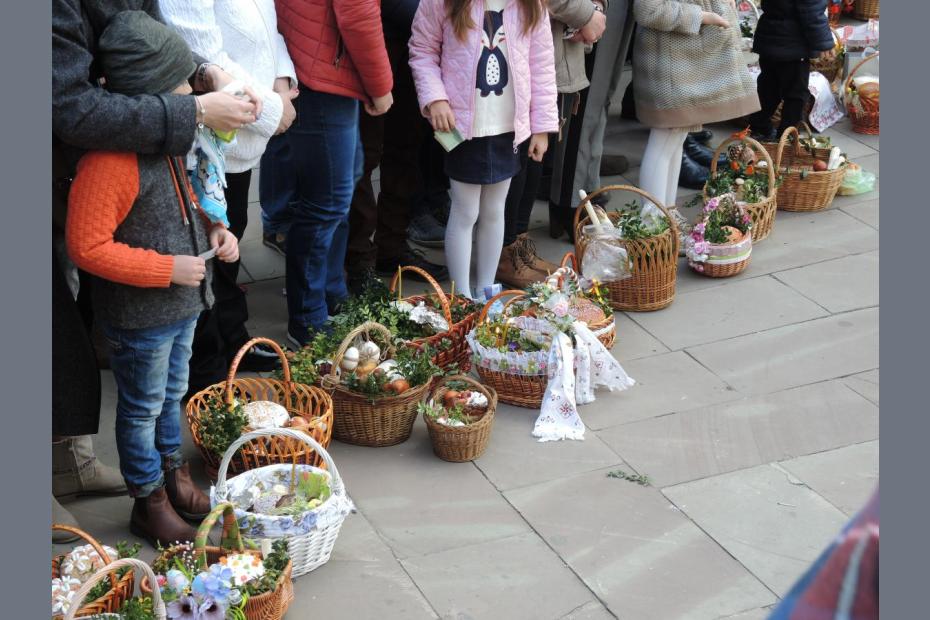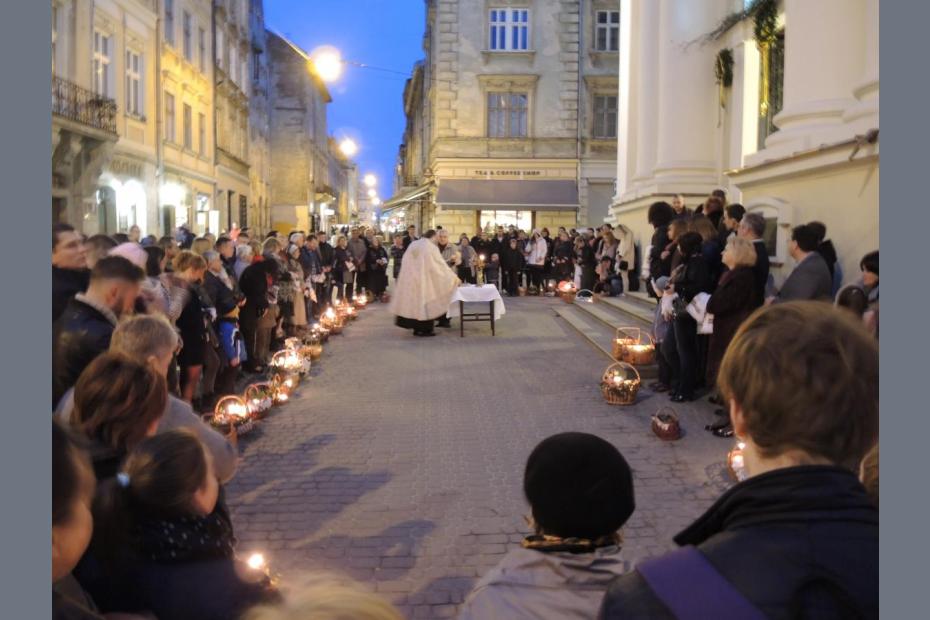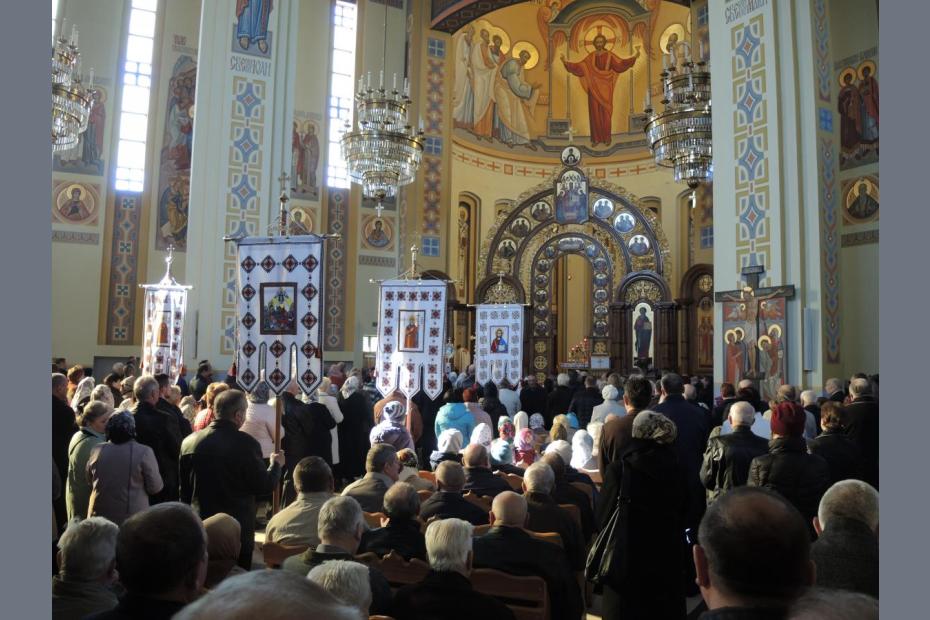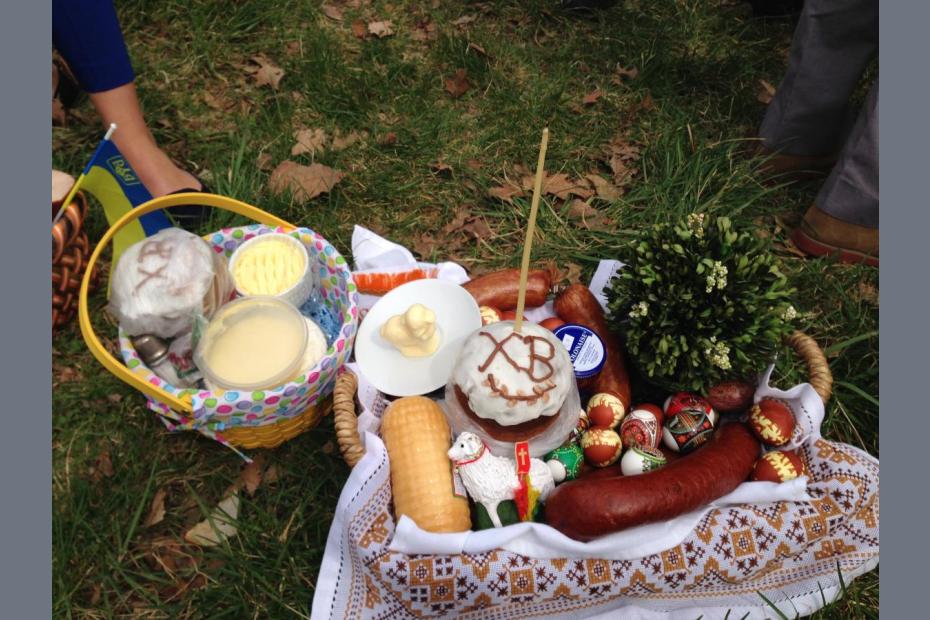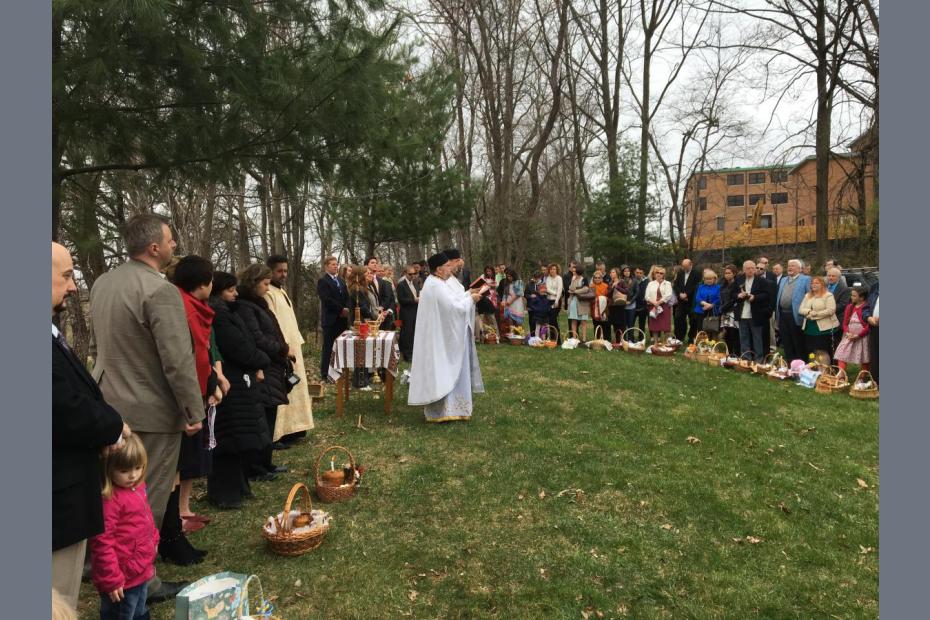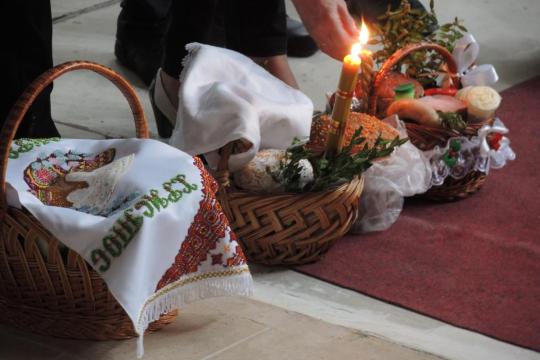In Ukraine, both Orthodox and Greek Catholic churches mark the date for Pascha, Easter, according to the ancient Julian calendar, the Roman calendar of Jesus’ era, rather than the Gregorian calendar that is used in the West today. In light of that, the feast is more often than not celebrated on a different day than Roman Catholic, Latin rite Christians celebrate it. Ukrainian Greek Catholics in Canada also celebrate according to the Julian calendar, but in the United States, Pascha is celebrated according to the Gregorian calendar.
Great Lent
Holy Week is preceded by the 40-day period of reflection known as Great Lent. Great Lent does not begin with ashes on Ash Wednesday, as in the Latin church, but rather begins on a Monday and ends on the Friday before Palm Sunday. During Great Lent the Liturgy of the Presanctified Gifts, a liturgy that does not include consecration, is celebrated on weekdays in lieu of the Divine Liturgy of St. John, the most frequently celebrated form of liturgy. On Sundays, the Divine Liturgy of Saint Basil the Great is celebrated.
The church asks for 40 days of fasting for Great Lent, but abstinence actually even begins the week before that, during a week known as Cheesefare week, when meat should not be consumed. Great Lent traditionally includes weekday fasting until noon, and meat and dairy abstinence thereafter.
Holy Week
Palm Sunday in Ukraine is known as Verbna Nedilia, Willow Sunday. Since palms were long unavailable in Ukraine, Ukrainian believers bring pussy willow branches to church in place of palms. The blessed willow branches are often kept in their homes, behind icons for the rest of the year.
Experience 360° video of Holy Week liturgies»
Holy Thursday is marked both with the Divine Liturgy of St. Basil the Great to recall the Last Supper, and a second service, the Service of the 12 Gospels. The video excerpts on this page, from the University Church at the Ukrainian Catholic University, Lviv, begin with Matins of the Passion and proceeds to the reading of the 12 Gospel passages on the Passion.
Good Friday is marked by the Great Vespers of the Entombment, when a plaschenytsia, a body-sized cloth icon of the dead Christ in burial shroud is processed three times around the exterior of the church. It is then brought inside to be venerated. Some Byzantine rite churches avoid Good Friday Stations of the Cross, regarding it as a Latin tradition imposed on the Byzantine rite, but churches in Lviv and elsewhere in Ukraine sometimes employ a variation of it. In the video shown here from Lviv’s Transfiguration Church, icons of various stations surround the icon of the shrouded body of Christ. The plaschenytsia remains on display for veneration through Holy Saturday.
Holy Saturday
One aspect of Ukraine’s Pascha (Easter) tradition, the elaborately patterned and colored Easter eggs known as pysanky, are perhaps familiar to many readers around the world. But the food tradition is bigger than that. A religio-cultural highlight of Holy Saturday is the Sviachenia, the blessing of Easter baskets. From the late afternoon to even past dark, the streets in Lviv are full of people carrying a wicker basket of Pascha foods to local churches to be blessed. The baskets, covered in a rushnyk, a special woven cloth usually proclaiming “Christ is risen,” are lined up in a rectangle near the church steps, and occasionally inside the church. The baskets typically contain a round loaf of a sweet egg bread known as paska, which is prepared exclusively for Easter; sprigs of green branches; some combination of ham, sausage and/or lamb; pysanky, the famous colored Easter eggs of Ukraine; cheese; and a beet and horseradish relish.
Outside the church, and sometimes inside, basket bearers and family members line up behind the baskets. All are very carefully displayed. A candle is stuck into the paska and lit for the blessing, and when a sufficient number appear, the priest offers prayers over the food, and sprinkles abundant holy water on the baskets and believers. Afterwards, families, many dressed up for the occasion, often take turns posing for photographs with their baskets. The practice is common to Orthodox and Ukrainian Catholic churches. The number of people who bring a basket is said to far exceed those who attend services. In Lviv, in 2017, the blessing of Easter baskets drew far more people than were to be seen at liturgies. Catholics interviewed in Lviv recognized the custom as an initially “pagan,” i.e. pre-Christian ritual, but regard it too as a fitting symbol of Easter and of new life.
Pascha
In the darkness of the eve before Pascha, the faithful gather at liturgy to continue to venerate the dead Christ through the the icon of the plaschenytsia. Known as a nadhrobne, it is a service at the tomb. People bow and venerate the cloth icon as they arrive, and the choir chants from the psalms and other prayers. The priest eventually takes the plaschenytsia and places it on the altar. The celebrants change their vestments from red for mourning to white for celebration, beginning a part of the service known as the Resurrection Matins.
An icon of the risen Christ is presented to the faithful, among lit candles signaling the light of Christ brought back into the world. A procession leaves the church, into the dark streets, to indeed bring the image of Christ into the world. When the procession returns to the church, the priests knocks on the closed door of the church, and proclaims for the first time the message, "Khrystos voskres! Christ is risen!" The community is blessed three times with the message, "Khrystos voskres!" and they answer each time, "Voistynu Voskrese! He is risen indeed!"
The service continues inside with the continued singing of Matins and the celebration of the Divine Liturgy.
Catholics, like the Orthodox, greet each other on Easter thereafter with the phrase "Khrystos voskres! Christ is risen!" to which the response is "Voistynu Voskrese! He is risen indeed!"
The Divine Liturgy is also celebrated on Pascha itself. The items in the basket are eaten ritually on Easter morning, and the rest of the day is a time of eating and celebration.
Bright Week
In the Byzantine tradition, the week after Pascha is known as Bright Week, and each day as Bright Monday, Bright Tuesday, etc. Though not mandatory days for church attendance, these liturgies are among the most heavily attended days of the year. There is no fasting or abstention this week, even on Wednesday and Friday. During the liturgies, the royal doors at iconostasis are left open, just as the tomb is now open for all to see in. Services during Bright Week begin with the verse: "Khrystos voskres! Christ is Risen!" The faithful are invited at the conclusion to approach the front and venerate an icon of Jesus resurrected. "Khrystos voskres! Christ is Risen!" the faithful announce again at the conclusion.
It is a tradition, on Bright Monday, for people to sprinkle each other with water upon exiting the church, as a reminder of their baptism. In public squares in Greek Catholic areas, groups of young people (and a few adults) sometimes raucously spray water at each other, on Bright Monday, marking it as “wet Monday.”
The Sunday after Easter is celebrated as Thomas Sunday, and recounts the appearance of Jesus to the apostles, including the doubting Thomas, who had said “Unless I see the mark of the nails in his hands and put my finger into the nail marks and put my hand into his side, I will not believe” (John 20:25).
